3DPrint.com | The Voice of 3D Printing / Additive Manufacturing |
- FDA Clears Ricoh Healthcare Solution to 3D Print Personalized Anatomical Models
- 3D Printing News Briefs, June 16, 2022: Lawsuit, Software, & Aerospace Case Studies
- Prodways Enters Into 3D Printer Distribution Partnership with Dental Axess
- Dutch Police Confirm Increase in 3D Printed Guns
- Can 3D Printing Make You Antifragile? Part 1
- Materialise CEO Talks 3D Printing Software and Ethics at RAPID+TCT
- Formlabs Dental Academy: Free Educational Platform for 3D Printing in Dentistry
- CEOs Dive Into Raising Capital Without Going Public – Part I
- Stratasys Offering 3D Printing Discounts to Service Bureaus in New Parts Provider Network
- Sending Optimized Silicon Carbide into Space with Binder Jetting
| FDA Clears Ricoh Healthcare Solution to 3D Print Personalized Anatomical Models Posted: 16 Jun 2022 07:00 AM PDT Japan-based multinational Ricoh revealed that its RICOH 3D for Healthcare solution, which integrates with IBM iConnect Access from IBM Watson Health to fabricate 3D printed anatomic models, has received 510(k) clearance from the U.S. Food and Drug Administration (FDA) for its craniomaxillofacial (CMF) and orthopedic patient-specific anatomic modeling. Ricoh's integrated platform is an end-to-end workflow that makes 3D printing anatomic models easy. The 3D printed anatomic models, produced with Stratasys technology, include very complex replicas of patient-specific anatomy. Experts at Ricoh's facilities work with surgeons to create lifelike representations of tissue and bone that can be used as physical simulators with biosimilar materials. They can also help clinicians see inside a patient’s anatomy with transparent and clear materials that complement the full-color models to provide a more accurate perspective of the patient's needs. Providers can select from one of two options based on their preferred work styles or needs. They can choose a point-of-care option, where a Ricoh Managed Services team works onsite at a healthcare facility to manage the entire process using Stratasys 3D printers. Or, they can select an on-demand option where they order and have the models printed at a Ricoh facility and shipped directly to them. The end-to-end workflow leverages the existing enterprise imaging solution used to view patient studies. So, once the care team establishes that they want a 3D model, the 3D print files can be uploaded to Ricoh's HIPAA (Health Insurance Portability and Accountability Act)-compliant portal. After the digital file is sent to Ricoh's staff of biomedical engineers, IBM iConnect Access works seamlessly with Ricoh's 3D Case Management portal and manufacturing service professionals to produce and deliver precise models. Leaning into familiar DICOM technology means healthcare providers access the same data and scans they're accustomed to, as many hospitals already rely on IBM Watson Health's zero-footprint universal viewer. With IBM iConnect Access, DICOM (digital imaging and communications in medicine) files can quickly be turned into a 3D printed model, which Ricoh then prints thanks to its partnership with Stratasys. Making a differenceThis is Ricoh's first 510(k) clearance and a crucial step in what the company describes as a long journey to bring simplified access to precision solutions and personalized healthcare to patients and physicians. Commenting on the FDA approval, Ricoh's Managing Director for North America's Additive Manufacturing division, Gary Turner, says the company is committed to healthcare innovation that will "turn the tide" on patient engagement and precision medicine.
3D printed models are becoming more prevalent in the medical field. In line with a report by the Radiological Society of North America (RSNA) 3D Printing Special Interest Group, patient-specific anatomical models are the baseline in the craniomaxillofacial (CMF) arena. But although the use of 3D printing technologies to aid clinical care in CMF has been used since the advent of 3D printing in the late 1980s, surgeons, engineers, and researchers were designing more manual ways of converting medical imaging datasets into 3D models. Today, companies like Ricoh, through its multiple partnerships, make these processes much easier and quicker. According to the RSNA, a growing body of work supports the benefits of 3D printed models, including increased comprehension of anatomy and pre-surgical planning for complex surgical cases, reduced operation times, and improved patient outcomes. With so many benefits for patients and doctors, Ricoh says it plans to solicit 510(k) clearance for additional treatment regions in the future. The post FDA Clears Ricoh Healthcare Solution to 3D Print Personalized Anatomical Models appeared first on 3DPrint.com | The Voice of 3D Printing / Additive Manufacturing. |
| 3D Printing News Briefs, June 16, 2022: Lawsuit, Software, & Aerospace Case Studies Posted: 16 Jun 2022 06:30 AM PDT First up in today’s 3D Printing News Briefs, we’ll share the latest update in the Continuous Composites lawsuit against Markforged. Next, nTopology has released an advanced lattice generation tool. Finally, on to aerospace news, as BigRep shared a case study about how its technology helped overcome COVID-19 supply chain challenges and Objectify Technologies shared one about redesigning a hydraulic block manifold for 3D printing. Markforged Challenges Lawsuit by Continuous Composites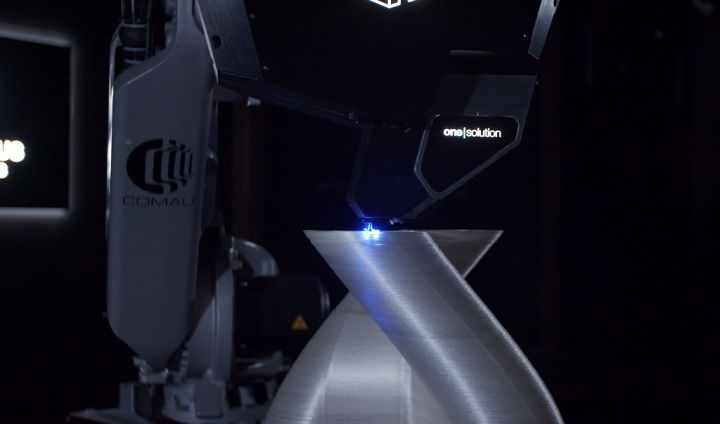 A composite part being 3D printed via Continuous Composites' 'CF3D' technology. Image via Continuous Composites. Last year, Continuous Composites sued Markforged, alleging that the metal and carbon fiber 3D printer manufacturer infringed upon patents that are related to its own Continuous Fiber 3D printing (CF3D). The case revolves around US patents ‘9,511,543,’ ‘9,987,798,’ ‘10,744,708,’ and '10,759,109,' which Continuous Composites says are part of a larger family of patents, revolving around its core technology, from before Markforged was founded. This fall, Markforged filed a motion to dismiss the case, in which Continuous Composites is seeking financial compensation and an injunction preventing the Massachusetts company from violating the patents in the future. Now, Markforged has called for the case to be thrown out, and barring this, has requested a trial by jury, stating that patent 9,511,543 covers “something different from the conventional slicing techniques,” and that the patent covers a 3D printing method that directs curable liquid material to a nozzle—but Continuous Composites doesn’t use this kind of material, so it’s not liable for patent infringement in this case. In addition, Markforged asked how it can infringe on the other three patents, because they all “fail to comply with one or more of the conditions for patentability.” So it seems like this case won’t be over anytime soon. nTopology Releases Advanced Lattice Generation Tool The new tools separate the lattice generation process into three fundamental components: unit cell, cell map, and lattice parameters. Engineering software provider nTopology has announced the release of its 3rd generation lattice generation tool, which it says is faster and offers more control over complex lattice structures. The goal was to make it easier than ever for new nTop users to access the lattice tools, which is why the lattice generation process has been separated into three main steps: selecting a unit cell, defining the cell map, and controlling the parameters of the lattice. For existing users of the software, nTopology wanted to streamline the transition to its new latticing technology, which includes 37 blocks that have been in development for nearly two years; visit the updated Lattices tab to find three new blocks that will enable you to transition over your current workflows. Some of the key features of this new release including super-fast lattice generation, and by super-fast, nTopology means a performance increase of 50% to the fastest lattice generation tools on the market. Users can also enjoy more control over creating lattices with new tools for streamlining design and optimization. These new tools include lattice warping, a unified latticing workflow, filter beam utilities, and the ability to create surface lattices, which enables the design of conformal rib grids to increase body stiffness in organic and complex shapes. BigRep Overcame COVID Supply Chain Issues by 3D Printing MoldsDuring the height of the COVID-19 pandemic, 62% of passenger planes were grounded, which isn’t great for their engines, as they need to be protected from the elements when parked for a long period of time. Due to supply chain shortages, Scandinavian Airlines (SAS) didn’t have enough off-the-shelf engine covers and exhaust plugs on-site, and turned to CNE Engineering, a local specialized supplier that uses large-format 3D printers by BigRep, for help creating parts for aircraft maintenance. To 3D print molds for producing the castable urethane parts, CNE used the BigRep ONE, with its cubic meter build volume, for the main piece, and the BigRep STUDIO for smaller features like removable mold inserts. BigRep’s bio-based PLX was used to print the outer shells, while HI-TEMP CF was used for the center core and the inserts were printed using TPU. Large-format 3D printing helped CNE meet the SAS’s fast timing requirements during a time that traditional supply chains were unable to do so.
You can read the full case study here. Objectify Technologies Redesigned Aerospace Manifold for AMFinally, Objectify Technologies worked with an aerospace customer to redesign a hydraulic block manifold for 3D printing, as the technology enables the fabrication of internal features and passages. In the aerospace industry, this kind of manifold is used to regulate fluid flow, which helps control power transfer between actuators, pumps, and other components of a hydraulic system. Using traditional manufacturing to create these typically requires specialized tooling because of the necessary complex drilling, and unfortunately, it can often lead to abrupt, angled junctions forming between flow paths, which causes flow separation and even stagnation. Using 3D printing to create the hydraulic block manifold out of an aluminum alloy allowed Objectify to reduce the weight of the component, while maintaining its robustness, improving flow paths, and considering loading constraints. In redesigning the manifold, Objectify used Rhino and MSC Apex to modify and optimize the design, Materialise Magics to prepare the data, and Simufact Additive to simulate the build. The company replaced unnecessary drill channels with simpler designs, which allowed critical areas to be modified and internal channels redesigned for 3D printing. The first design was printed and subjected to stress tests, and the final hydraulic block manifold had a 30% reduced weight, up to 60% improved flow efficiency, and was printed in one piece. The post 3D Printing News Briefs, June 16, 2022: Lawsuit, Software, & Aerospace Case Studies appeared first on 3DPrint.com | The Voice of 3D Printing / Additive Manufacturing. |
| Prodways Enters Into 3D Printer Distribution Partnership with Dental Axess Posted: 16 Jun 2022 06:00 AM PDT Prodways Group, French manufacturer of the MOVINGLight 3D printing platform, has announced that it has entered into a distribution agreement with Dental Axess, a Swiss provider of software solutions for digital dental manufacturing. Along with strengthening Prodways' position in its existing markets of North America and Europe, the deal will also expand Prodways' commercial availability to Australia.
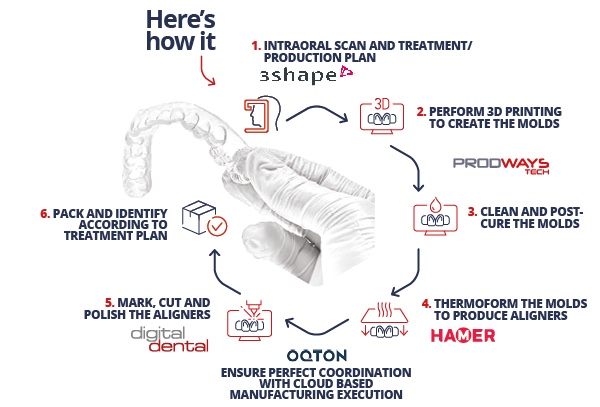 Although the MOVINGLight digital light processing (DLP) system isn't used solely for dental manufacturing, its particularly high throughput (among other features) has made it ideal for this purpose. Additionally, Prodways also offers the LD Dental Series, which is essentially its MOVINGLight range tweaked and taken up a notch specifically for high-volume dental production. This series also includes the Clear Aligner Ecosystem. Aside from hearing aids (a market Prodways also has a foot in), dental devices, and especially dental aligners, are probably the most commercially prevalent application of 3D printers, at least at this point in the industry's history. Moreover, and again, as is the case with hearing aids, the use of 3D printers for dental prosthetics and molds is far in advance of all other commercial uses of the technology thus far. As such, developments in the dental sector can be viewed as potential leading indicators for other sectors in the overall 3D printing industry. 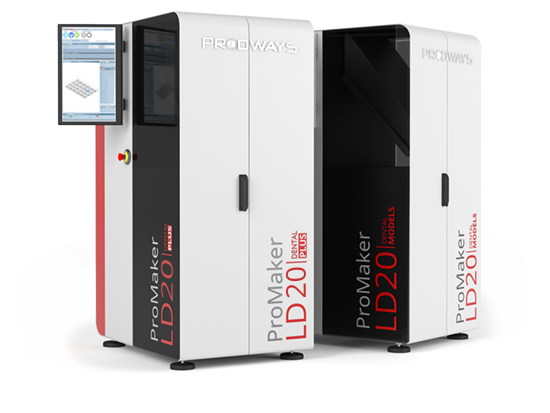 Whether it starts happening more often or not, in the 3D printing industry, the transition of software as a service (SaaS) companies to SaaS companies that also distribute hardware seems to make sense. Primarily, this is because 3D printing has been making a shift in focus to software, akin to what has happened with the PC industry over the last two or three decades. The most obvious difference is that the shift is happening much earlier in 3D printing, presumably in large part because the industry is following a precedent set by PCs. 3D printing hardware companies still have an opportunity, then, to adjust to that reality ahead of time, and to take advantage by making moves like the one Prodways has made here. Perhaps eventually, more SaaS companies can become end-to-end 3D printing services companies — including the distribution of hardware — which would allow hardware manufacturers to focus on scaling up production of machines. Images courtesy of Prodways The post Prodways Enters Into 3D Printer Distribution Partnership with Dental Axess appeared first on 3DPrint.com | The Voice of 3D Printing / Additive Manufacturing. |
| Dutch Police Confirm Increase in 3D Printed Guns Posted: 16 Jun 2022 05:30 AM PDT Dutch police recently revealed that there has been a significant increase in 3D printed weapons in the Netherlands and abroad. The announcement comes after the National Unit, which combats serious organized crime and terrorism, reported the results of an investigation into 3D printed firearms during the International Conference on 3D Printed Firearms held last month at the Hague. According to an official statement, Dutch police have been detecting signs that 3D printed firearms would be on the rise. Even though the study results show that the supply of ready-to-use 3D printed firearms is currently small compared to the supply of conventional firearms, they see an apparent increase in 3D printed gun confiscations. Our own research also shows that gun arrests have tripled in less than two years and that there have been considerably more seizures of 3D printed firearms and parts. Furthermore, 3DPrint.com's investigation detected that even though North America leads the arrest statistics, it is quickly followed by Europe. First of manyFor the investigation, the Dutch police decided to map the phenomenon to recognize the extent of the problem within the country. The research shows that since 2021 there has been a sharp increase in seizures of printed firearms or parts and that the most commonly encountered 3D printed gun variants are not reliable. Last year, 3D printed firearms and printed parts were seized in 14 investigations in the Netherlands. For example, in November 2021, police found a 3D weapons factory in a house in Rhoon. Among the findings, they seized nine 3D printers making parts of firearms at the time of the raid, dozens of pieces that had already been printed, and sets with metal parts used to make a working firearm. Another high-profile case involved five suspects arrested in December 2021 after police found an arsenal of automatic firearms, electroshock weapons, rifles, and revolvers, along with various 3D printers for printing firearms parts. Several 3D printed firearms have also been found this year, including last February, when a man from Zeeland was arrested during a raid for possessing 3D printed firearms and right-wing extremist material, including Nazi flags, Airsoft weapons, and other weapon parts made with a 3D printer. Many of the weapons seized by police last year were fully 3D printed, but most models consist partially of metal parts. As part of the research, Dutch police highlighted the surprising number of workshops found, most of them intended for larger-scale printing of firearms. As part of their research, the team, which is part of the National Criminal Investigation Service (DLR), examined how well the different 3D printed firearms function to determine the level of endangerment. According to the report, the most commonly encountered variant of a 3D printed firearm is described as unreliable. To prove this, police self-constructed several weapons and carried out various shooting tests with confiscated firearms, and realized that there were several malfunctions and defects. The team says the main reasons are production errors and the failing material. To shed some light on the matter, 3DPrint.com's Editor in Chief, Michael Molitch-Hou, explained in 2020 that 3D printed guns have so far "posed little threat to the public since the plastic parts are easily destroyed by the extreme forces of the weapon upon firing." Firearm experts have also expressed that plastic weapons require high-end printers and are known to blow up in shooters' hands, claiming it is far easier to obtain access to an authorized weapon in many countries (as well as illegal firearms in others). However, some of the latest news represents a growing trend in the 3D printing of arms. Widespread cases continue to bring 3D printed guns to the center of media attention; one of the most recent was a Springfield, Massachusetts man arrested after allegedly 3D printing AR-15 guns in his home.
The team also focused on the current legal framework. Currently, possessing, manufacturing, and trading a firearm or essential parts in the Netherlands is punishable under the Weapons and Ammunition Act. That also applies to a 3D printed firearm. However, possessing the designs of 3D printed guns (the so-called blueprints) and sharing those files is not. Even though spreading these blueprints can have major consequences, and any involvement can result in criminal preparation or collaboration—punishable to those who contribute—Andy Kraag, head of the national investigation, told local media site NOS that the police and justice want to discuss whether "technological barriers" can be erected in printers to make it more difficult to 3D print weapons. Before 2021, virtually no 3D printed firearms or parts were seized in the Netherlands. Alternatively, other countries found 3D printed guns in terrorist attacks, including the one at a synagogue in Halle, Germany, which left two people dead. The creation of 3D printed guns by neo-Nazi Stephan Balliet, who launched the 2019 shooting attack in Germany, was described as a warning to security services by experts, according to UK newspaper The Independent. Both international and local events have alerted Dutch police, who said they are keeping a close eye on developments around 3D printed firearms. The post Dutch Police Confirm Increase in 3D Printed Guns appeared first on 3DPrint.com | The Voice of 3D Printing / Additive Manufacturing. |
| Can 3D Printing Make You Antifragile? Part 1 Posted: 16 Jun 2022 05:00 AM PDT Antifragile as a desirable concept was popularised by Nassim Taleb. In the 2012 book Antifragile: Things That Gain From Disorder, he postulates that there are fragile things, people, and organizations that are harmed more in the event of chaos and disorder. There are also resilient systems that can recover quickly from disorder and robust systems that stand up to chaos. But, he is interested more in the idea of antifragile, which is a system, organization, thing or person that grows stronger because of shocks. The most succinct quotes from him on it states,
or
The Muddled History of AntifragilityExamples are said to exist in nature where muscular and bone systems grow stronger when exposed to external force. Even though I think that this is an example of the body rerouting resources to where they are needed and not antifragility, I do think that the concept is interesting. I think more clearly that it comes from “what does not kill you makes you stronger” which comes to us from Nietzsche. Nietzsche is suggesting that, “He divines remedies for injuries; he knows how to turn serious accidents to his own advantage; that which does not kill him makes him stronger.” In Nietzsche’s work, this is a skillset and attitude that lets some survive better. If you read the entire quote it comes off as a bit of an ode to psychopathy, but this is but one of the reasons why Taleb perhaps does not acknowledge Nietzsche as the source material for the idea of antifragility. Also, “there is no word for the exact opposite of fragile” is perhaps correct, but “what does not kill you makes you stronger” was the opening quote of the movie Conan the Barbarian in 1982. And that would have been a nice way to open a book with a bang. But, one doesn’t get to be an ersatz Malcolm Gladwell without co-opting or obscuring the source for an idea that resonates.
I do also think that often Nassim Taleb is an economic Deepak Chopra where enough sophistry and resonating anecdotes obscure a lack of wisdom in a cloud of intellectual fireworks firing off to nowhere in particular. If you confuse people enough, then any path in a created wilderness can seem like a true path. But, while I do think that we can all agree that antifragile would be a good thing for an industry itself to aspire to be, it would also be something good for a company to want to be and it would be a good thing for a technology to be able to provide. Is Being Antifragile Preferable to Resilience?So far our dreams have been about us enabling resilience. We hope to make the response to chaos better through enabling 3D printing access by organizations. We hope therefore that their deployment of 3D printing can automagically make a company more resilient. We also hope that an entire supply chain could be more resilient with the deployment of 3D printers throughout it. Likewise, perhaps, a military in its entirety could possibly be more resilient to attack and guerilla-like disruption through simply throwing 3D printers in the mix. But, could we perhaps go even further than this and make systems antifragile? Could we be a simple sauce to bring antifragility as a quality to any organization that aspires to have it? To answer this we first have to understand just how attractive antifragility could be for a company.
With resilience you improve your ability to absorb shocks. A port strike in Long Beach will therefore not hinder you as much as another since you are more flexibly able to deal with the fall out. A second strike in Ningbo Zhoushan may circumvent your ring fenced approach, however. Or a longer Long Beach strike may still affect you. Resilience is akin to a rubber band that is stretched and then returns to its initial position. Over time, the band can break, lose elasticity or work less and less. As a system it may have to be replaced, reinforced, or strengthened. Resilience is like being bamboo, strong and springing back in the strongest of storms. Robustness is more like being like an oak and resisting the shock. Again here, the system can fail. Here’s where the sweet aroma of antifragility becomes intoxicating. With antifragility we don’t just survive a strike, we become better at surviving strikes. A supply chain interruption will lead to us being a better company. We will not just overcome, we will emerge even stronger. You can clearly see the siren call of this idea. But, we must be careful. Antifragility as an idea is extremely powerful but we do not yet really know how to achieve it. We can aspire to it but we can not know that it will ultimately succeed. We run the risk of aspiring to be antifragile but not succeeding to be at all robust and resilient to any kind of shock at all. In reaching for the ephemeral and ultimately very enticing goal of being antifragile we may not get much if any long term gain at all. Antifragile is therefore something that is a laudable aspiration but may not in any way, shape, or form actually be attainable for us. Images Laura Lewis, Matthew, Paweesit. The post Can 3D Printing Make You Antifragile? Part 1 appeared first on 3DPrint.com | The Voice of 3D Printing / Additive Manufacturing. |
| Materialise CEO Talks 3D Printing Software and Ethics at RAPID+TCT Posted: 16 Jun 2022 04:30 AM PDT With the newest release of its Magics software and its new CO-AM platform, Materialise (Nasdaq: MTLS) is demonstrating how it continues to mature with the additive manufacturing (AM) industry. On the ground at RAPID+TCT, 3DPrint.com was able to speak to Materialise CEO Wilfried Vancraen, along with Senior Marketing Director of Software Hans Van Glabeke, about the company's role in the industrialization of AM. The CO-AM 3D Printing EcosystemThe company was actually planning on announcing CO-AM at the upcoming IMTS show in September. However, Materialise was spurred to launch the platform sooner when, at AMUG, Vancraen noted other companies claiming to develop what his firm had already accomplished with CO-AM. By acquiring manufacture execution systems (MES) startup Link3D, Materialise was able to move upstream into order entry and storefront functionality, as well as monitor finishing equipment and other tools outside of actual 3D printers. Connecting all of the modules of CO-AM is a data lake, where a single customer's data sits. While the information is the property of the client, Materialise helps to structure it for a given vertical. It can then rely on machine learning to optimize the flow and structure of this information. For instance, in the Materialise medical division, layers of a medical device or implant are captured by cameras inside of the printers. Artificial intelligence is then applied to optimize the design and printing process. This layer analysis is being ported over to other applications and is in a pilot phase.
3D Printing ModulesThe CO-AM software platform is agnostic with regard to the exact CAD or build preparation tools one might use. Therefore, they can rely on build prep from Materialise in the form of Magics or even GrabCAD from Stratasys. There are already third-party apps that are available for CO-AM and will continue to be more in the future. For now, they include tools from Castor, which analyzes a manufacturer's parts to determine those best suited for AM, as well as AM-Flow, which offers solutions for tracking, grouping, and packaging parts automatically. Among the modules connected to CO-AM is Magics. Magics is the de facto industry standard for build preparation software, allowing users to perform such functions as changing wall thickness to adding support structures to a 3D model ahead of print. With the latest edition, Magics 26, users can work with both CAD and mesh tools based on the Parasolid kernel. This means that they don't have to go back and forth between a CAD program and Magics to cut a model into parts, or add fillets and holes. While it's possible to purchase individual solutions, like Magics, enterprises can also subscribe to CO-AM as a larger package configured to a specific vertical. Companies that have been using their own automated workflow to standardize the production of a specific 3D printed product, for example patient-specific hearing aids, won't need that many additional CO-AM modules. Meanwhile, medical device and aviation manufacturers might have to rely on a broader set of different tools and workflows, as they will have a wider variety of different components to be made. They will also need to perform more planning, scheduling, and inspection. Van Glabeke likened the model to Microsoft Office 365 versus Word. You can have access to the entire Office 365 cloud suite or just download Word for your desktop. The company is still working on a full customer portal interface in which customers can subscribe themselves and add extra modules. For now, Materialise is working to deploy CO-AM with high-end customers, otherwise the deployment costs would be too high. This will lower the threshold to traditional Magics customers. A 3D Printing Service to Inform 3D Printing SoftwareThough Materialise has one of the largest 3D printing production footprints in the industry, its footprint as a software company is bigger. Why doesn't it focus only on the software business, instead of 3D printing about 300,000 eyewear frames per year? For the experience. The firm's service bureau business has always been an important component to understand what software it takes to 3D print good parts on a variety of systems.
Now that the industry is scaling up for mass production, so too is Materialise. The company aims to 3D print a million eyewear frames annually at its Polish plant so that it can solve all of the problems required to mass produce a product.
Despite the increased automation, Materialise maintains a human-centered philosophy. "We believe in the human brain to look at data, to make interpretations and so on," Van Glabeke said.
Ethics in 3D Printing BusinessAs a writer in the industry, I've always marveled at how Vancraen's philosophy balances with the world of business, which is often morally questionable to say the least. Materialise is known to strive for ecological sustainability and avoids operating in weapons manufacturing whenever possible. I asked Vancraen how he navigates this complicated territory.
The CEO went on to describe how that expands to its operation on the public stock market:
As the 3D printing industry increasingly gets integrated into the broader world of mainstream production, it will be interesting to see how the company continues to navigate this area. Mass manufacturing is an area fraught with ecological and social destruction typically driven by weapons producers. Questionable supply chains rely on slave labor and the erosion of habitats, which support the biodiversity necessary for existence on earth. These supply chains, in turn, support the global military industrial complex, powered by and powering fossil fuels. In the meantime, the company will certainly empower AM's industrialization, but, in the long run will Materialise lead the change that replaces this system or become co-opted by it? The post Materialise CEO Talks 3D Printing Software and Ethics at RAPID+TCT appeared first on 3DPrint.com | The Voice of 3D Printing / Additive Manufacturing. |
| Formlabs Dental Academy: Free Educational Platform for 3D Printing in Dentistry Posted: 15 Jun 2022 07:00 AM PDT Formlabs has long been focused on dental 3D printing applications, and made things even more official by launching its Formlabs Dental unit in 2019. Today, the double unicorn announced that it’s launching a new educational platform called Formlabs Dental Academy, including both free and paid courses meant to teach dental lab technicians, orthodontists, and clinicians how to use and implement 3D printing into their dental businesses. The dental education platform will work to advance the use of SLA 3D printing in dentistry by offering webinars, online and in-person courses, guides, and more.
Dental technicians who integrate 3D printing into their treatment plans can offer more personalized and cost-effective treatment in the form of custom dentures, implants, crowns, models, and more, and can also make their workflows more efficient as well. It seems like this is a well-known fact, as Formlabs says its users have 3D printed more than 25 million dental parts. But, the company’s Formlabs Dental Unit found that there was a gap in the dental field in terms of education about the technology, which is slowing adoption. Formlabs Dental is working with dental leaders to offer accessible 3D printing solutions, and created the Dental Academy to help solve this skills gap. Formlabs is collaborating with industry leaders and educational institutions to come up with its dental 3D printing curriculum, which supports undergraduate, postgraduate, and MSc education. Formlabs Dental Academy partners include private centers and universities, such as SWECADD, the London Dental Institute, and Capacitación Pérez Giugovaz. The company is also working with a number of key opinion leaders, or KOLs, from the global dental community, who use Formlabs products and services and are helping to shape Formlabs Dental Academy.
Formlabs Dental Academy is a free resource for dental professionals to continue developing and growing their 3D printing skills, which will hopefully lead to more adoption in the industry. The platform offers educational content and comprehensive training on the many benefits of 3D printing, including customization, as well as dental materials and applications. Users can choose from a variety of courses that focus on various subject matter and learn to improve their performance and print results and deliver the best clinical outcomes for patients. Right now, the curriculum will focus on SLA 3D printing, and focus areas will include an introduction to SLA, its use in restorative dental and orthodontic applications, technology basics and training, materials, the benefits of digital dentistry, 3D printing implementation strategies for the dental lab and clinic, and more; however, Formlabs Dental Academy will add more content as it becomes available. Initially, courses will be available in English, Spanish, German, and Swedish, with both online and in-person options at private educational centers and the company’s Boston, Berlin, and Budapest offices. The post Formlabs Dental Academy: Free Educational Platform for 3D Printing in Dentistry appeared first on 3DPrint.com | The Voice of 3D Printing / Additive Manufacturing. |
| CEOs Dive Into Raising Capital Without Going Public – Part I Posted: 15 Jun 2022 06:00 AM PDT After several years of watching a handful of 3D printing companies follow the SPAC trend to go public, it became even more evident that most of the businesses in the 3D printing sector stay private. But how do they brave the waves to gather the liquidity needed to push their projects forward, advance their technology, and survive in the harsh landscape of capital raising strategies? CEOs from three of the most successful startups in the 3D printing sector provide a road map, complete with pointers on what to avoid and where to capitalize along the way. This is how they surf the ups and downs of fundraising to keep control of their own business. CEOs Matt Petros from 3DEO, Sonny Vu from Arevo, and Avi Reichental from Nexa3D shared their knowledge on searching for capital, finding the perfect investor match, and how to strengthen their negotiating positions. The post CEOs Dive Into Raising Capital Without Going Public – Part I appeared first on 3DPrint.com | The Voice of 3D Printing / Additive Manufacturing. |
| Stratasys Offering 3D Printing Discounts to Service Bureaus in New Parts Provider Network Posted: 15 Jun 2022 05:30 AM PDT After reporting that the first quarter of 2022 was its strongest in six years with a revenue of $163.4 million, Stratasys (NASDAQ: SSYS) has introduced a new loyalty and discount program for its 3D printing service bureau customers. Called the Stratasys Parts Provider Network (PPN), this new program gives these customers easy access to volume discounts on the company’s software, materials, 3D printers, and service contracts. In addition, PPN members can enjoy wholesale pricing for on-demand 3D printed parts through Stratasys Direct Manufacturing. The polymer AM leader offers a total of five different 3D printing technologies and a large material selection, and caters to a wide variety of applications, including auto racing, fashion, medical, aerospace, and more. Now, thanks to the new Stratasys PPN, service bureau customers can more easily use all of the company’s offerings and access discounted rates as well.
 The Stratasys Parts Provider Network (PPN) provides access to volume discounts on Stratasys systems, materials, service contracts, and software, as well as wholesale pricing for on-demand parts printed through Stratasys Direct Manufacturing. Members of the Stratasys PPN can enjoy what the company calls “simplified operations” with a reliable program that offers rewards based on growth, and can also access a special online Customer Hub for ordering materials and other consumables. The program offers three tiers, starting at $100,000 annually in purchases, as well as a 75% discount on software integration so members can achieve a better AM production workflow, and other premium discounts on hardware, materials, and service contracts. Since Stratasys launched its new PPN, over 30 global service bureaus have become members, including Carlsbad, California-based GKN Additive, a digital manufacturer of 3D printed advanced plastic and metal parts.
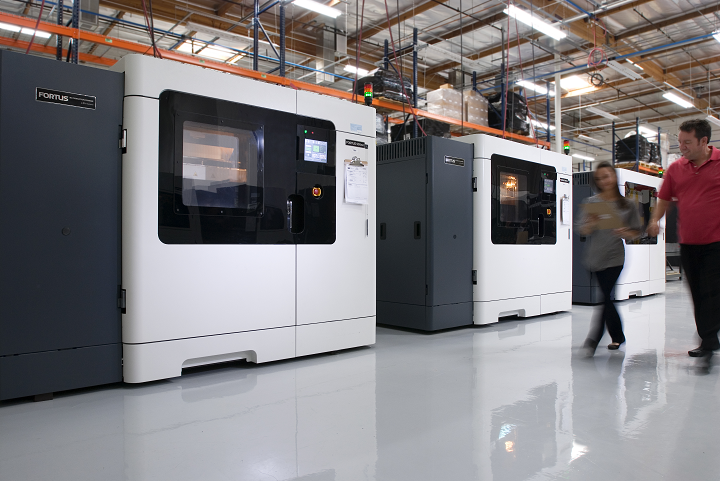 Members have access to a special online hub for ordering additive manufacturing materials, a PPN class of service maintenance across Stratasys' five polymer technologies, and a 75% discount on software integration for an improved production workflow. Other member benefits include access to a special PPN class of service maintenance across the five polymer AM technologies that Stratasys offers; the ability to aggregate purchases for increased volume discounts; the Stratasys Direct Wholesale Parts Program; and eligibility for self-maintenance certification. PPN members also get access to exclusive education and networking opportunities, such as participation in Voice of Customer events and co-marketing opportunities. Stratasys wants its new program to support a strong AM ecosystem, which is why it’s also investing in strengthening the partnerships between its service bureau customers and Stratasys Direct. The result will be an insourcing-outsourcing model to offer access to AM technologies and materials that Stratasys doesn’t currently offer in-house. The post Stratasys Offering 3D Printing Discounts to Service Bureaus in New Parts Provider Network appeared first on 3DPrint.com | The Voice of 3D Printing / Additive Manufacturing. |
| Sending Optimized Silicon Carbide into Space with Binder Jetting Posted: 15 Jun 2022 05:00 AM PDT TECNALIA is a benchmark research and technological development center focused on transforming knowledge into business opportunities for companies and GDP growth for society. The Materials for Extreme Conditions research group belongs to the company's Industry and Mobility (I&M) division and focuses on the design, manufacturing, maintenance, and end of life of industrial products and services. SENER Aeroespacial is a leading supplier of high-performance aerospace systems for space, defense, and science, adding value with technological developments for more than half a century. The company works with clients such as the European Space Agency (ESA) and carries out multidisciplinary projects in optomechanics, large mobile structures, and instrumentation and Infrastructure control. The material flexibility of X-Series binder jetting technology allows TECNALIA to use its InnoventX system to process a range of powders that support various industries. For example, the team uses its expertise to optimize hard metal and tool steels that drive performance improvements in the cutting tool industry as well as processes technical ceramics like silicon carbide and alumina used in the most cutting-edge innovations in critical applications. The TECNALIA team has collective knowledge in materials for extreme temperature, wear, abrasion, and corrosive environments, making them the natural partner when SENER Aeroespacial and the European Space Agency (ESA) wanted to investigate a new manufacturing route for a satellite optical support. The harsh conditions of space travel require components with high dimensional stability, a coefficient of thermal expansion (CTE) compatible with their adjacent systems, and excellent surface quality and mechanical properties. Thus, ceramics are ideal for space applications because of their thermo-mechanical stability, high temperature performance, hardness, and light weight and TECNALIA brought the required material and process expertise to the table to apply to challenge. "Space applications are always looking for weight reduction since this is directly linked to the final payload cost," said Dr. Iñigo Agote, Project Manager and Group Leader at TECNALIA, explaining how lightweighting is a systematic demand of aerospace companies today. Saving mass is one reason why the technical ceramic silicon carbide (SiC) is a highly sought-after material in this sector. It can be polished until it’s smooth with unique benefits of staying lightweight, strong, and with the thermal properties to adjust to temperature extremes seen in space. However, fabricating SiC using traditional methods is both costly and difficult because of exactly these desirable high-performance properties. "The degree of shape complexity is limited when using more traditional production processes like cold forming and sintering," Agote said. "Parts require final machining if the geometry is complex and machining ceramics like SiC is a tough and expensive process." Additive manufacturing was investigated to provide a near-net shape part to reduce the difficult and expensive machining and polishing post-processing steps. Binder jet 3D printing was identified as the only process able to create the unique SiC design with speed and precision, even among other additive technologies because the dark powder won't UV cure and the high melting point eliminates laser-based methods. The TECNALIA team got to work identifying adequate SiC powders and defining the best processing steps. The flexibility of the Desktop Metal InnoventX machine to customize parameter settings combined with the process and materials expertise of the TECNALIA team to tailor the properties for this application led to the breakthrough that delivered a final part with the required quality. The part could be printed in the InnoventX in 3 hours before PIP and infiltration with silicon for densification. Download the complete case study to learn how the TECNALIA team used binder jetting to produce near-net shape parts that reduced both post-processing time and mass. The post Sending Optimized Silicon Carbide into Space with Binder Jetting appeared first on 3DPrint.com | The Voice of 3D Printing / Additive Manufacturing. |
| You are subscribed to email updates from 3DPrint.com | The Voice of 3D Printing / Additive Manufacturing. To stop receiving these emails, you may unsubscribe now. | Email delivery powered by Google |
| Google, 1600 Amphitheatre Parkway, Mountain View, CA 94043, United States | |


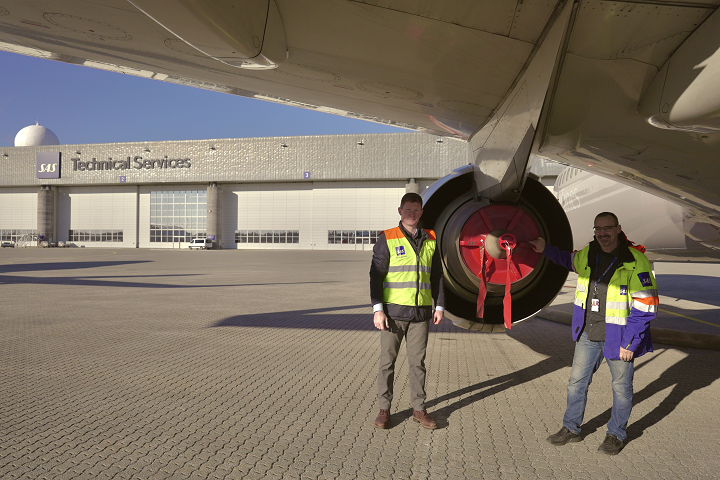
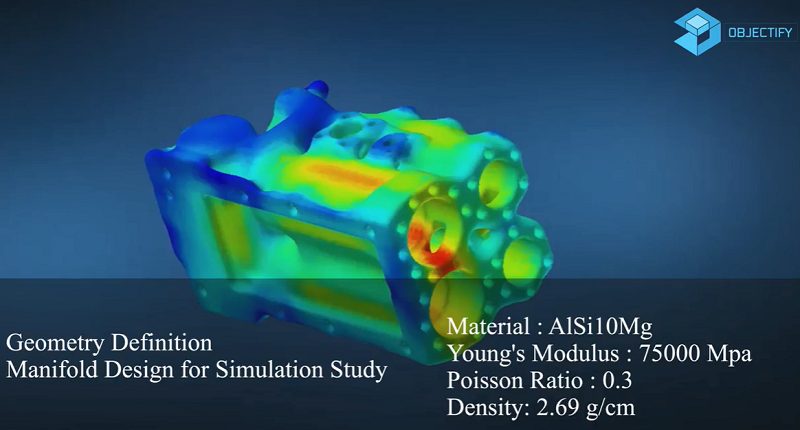

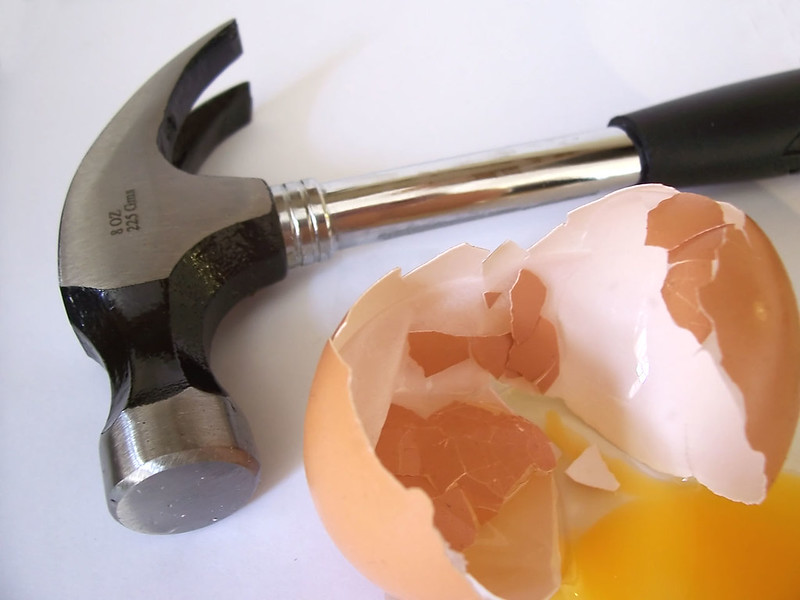
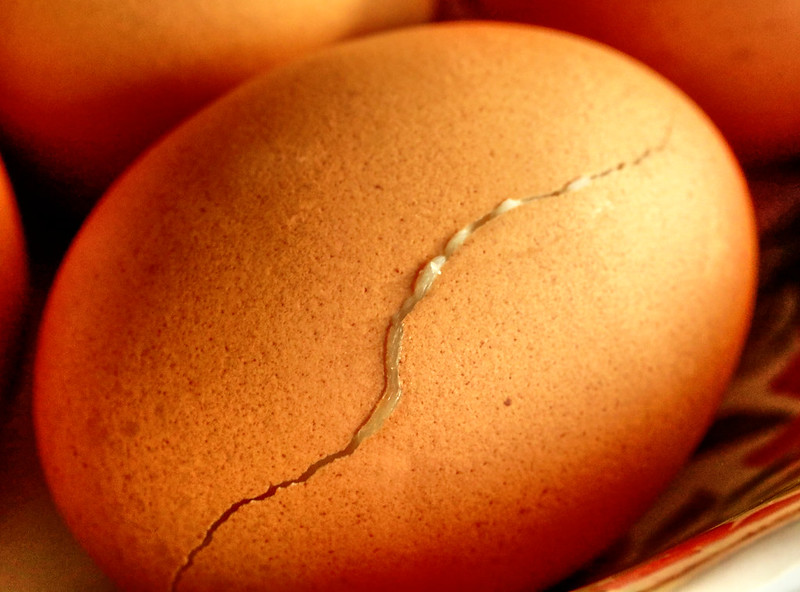
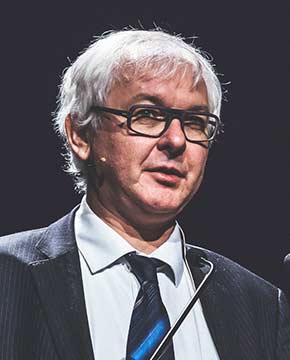
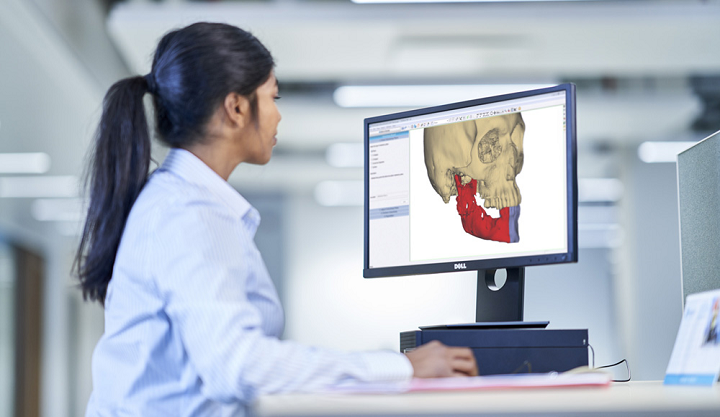


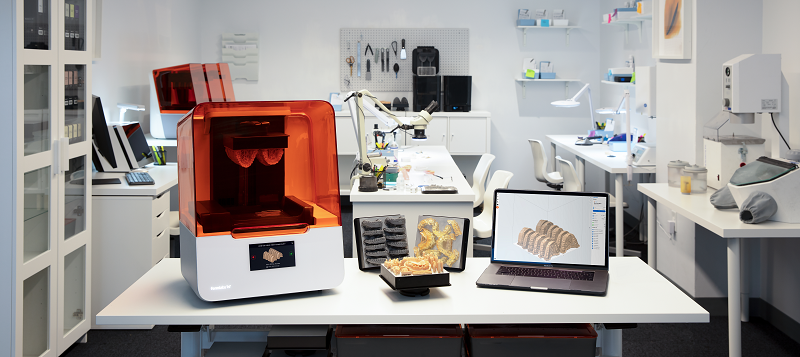
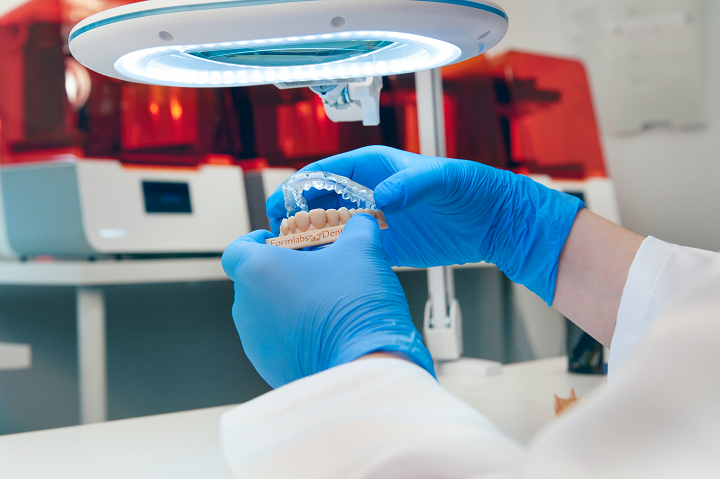



0 comments:
Post a Comment